Learning to love a laid-back listening lifestyle.
Apollo is one of the deities in Greek and Roman mythology and has been recognized as the god of a great many things including archery, music and dance, truth and prophecy, healing and diseases, the Sun and light, poetry, and more.
Sendy Audio’s version of Apollo may be channeling the god of music, but rather than embodying unforgiving truth, this god is much more relaxed and informal. This new Apollo is easy-going and calm. More ‘The Dude’ from The Big Lebowski, than a lightning bolt hurling Zeus.
- Extremely comfortable with a terrific headband and plush earpads
- Flawless construction
- Able to be driven properly from a wide variety of sources
- Great included cable and 4.4-3.5mm adapter
- Proper hard travel case
- Warm, v-shaped, and non-fatiguing sound
- Narrow soundstage
- The colored sound may not appeal to critical listeners
- Laid-back midrange can get congested
The Apollo are Sendy Audio’s new affordable take on planar magnetic headphones, and while they share many design similarities to the TOTL Peacock, they are about 1/3 the price. Sporting 68mm quad-former planar drivers, they are sufficiently efficient to be driven by most devices, further lowering the price of entry to a planar audiophile listening setup by not requiring expensive DAC and amplifier purchases for use.
The Apollo borrow the excellent headband design from the older Aiva model but bring a very different sound and character to the company’s planar magnetic lineup. In the competitive midrange planar market dominated by black and silver plastic, do the boutique-looking wooden Apollo offer a compelling argument for something different?
Sit back. Put up your feet. Slip on these ultra-comfortable headphones and let relaxation rule. As we know, the dude abides.
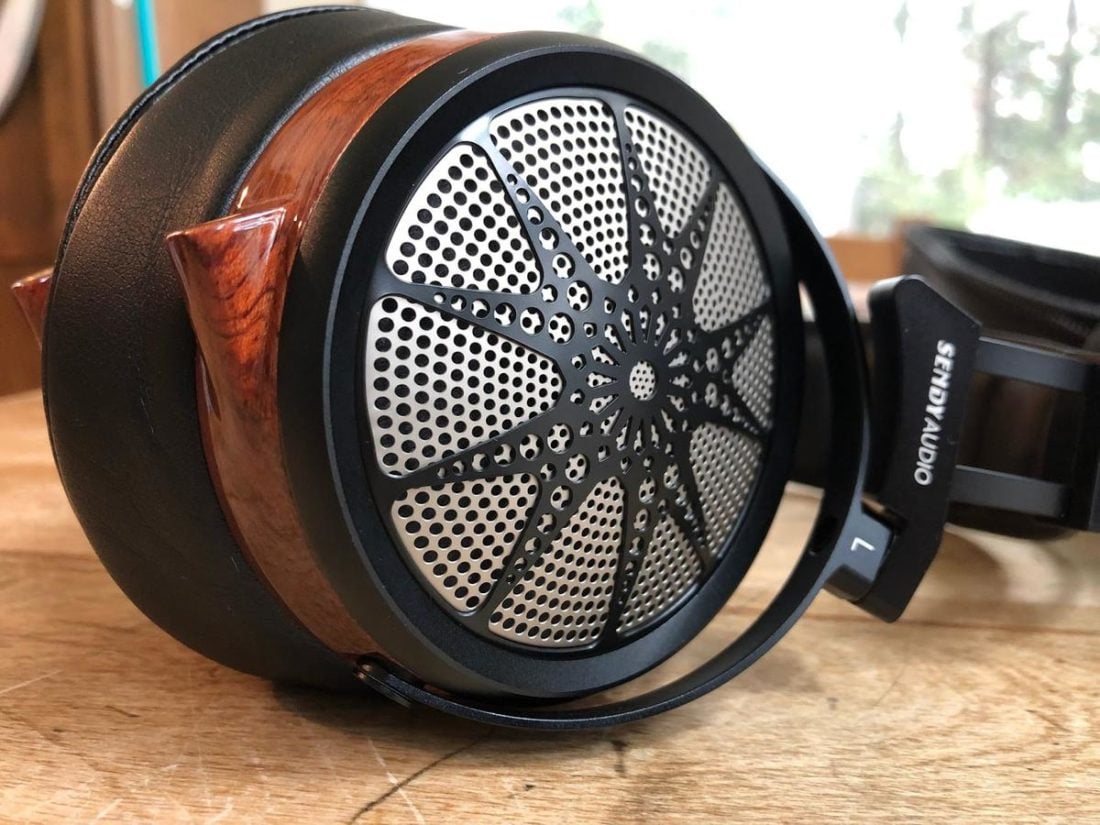
Company Overview
Sendy Audio, founded in 2015, and located in Dongguan, Guangdong, China, is a sub-brand of Sivga Electronic Technology Co., Ltd. They are committed to small-scale building of hand-crafted wooden headphones. They refer to their planar magnetic series as ‘Black Beauty’.
“Ninety per cent of the world’s headphones are produced in China, 90 percent of China’s headphones are produced in Guangdong, and 90 percent of Guangdong’s headphones are made in Dongguan,” explains SIVGA co-founder and product chief Zhou Jian, an 18-year audio industry veteran who has done work for global brands like Sennheiser Electronic GmbH & Co, Sony and Bose.
His company is based in Dongguan because, he says: “Dongguan’s industrial chain is near perfect.” – businesstimes.com
Technical Specifications
- Form: Open-back, Over-ear
- Drivers: 68mm, QUAD-FORMER planar magnetic drivers
- Impedance (Ohm): 16 Ohms
- Sensitivity (dB): 95 dB
- Frequency Response (Hz): 20 Hz – 40 kHz
- Removable Cable: Y, 2m, 6N OCC copper braided
- Source Jack: 4.4mm, TRRS, balanced + 3.5mm TRS adapter
- Cup/Shell Jack: 2x 2.5mm
- Mic: N
- Weight (g): 395g
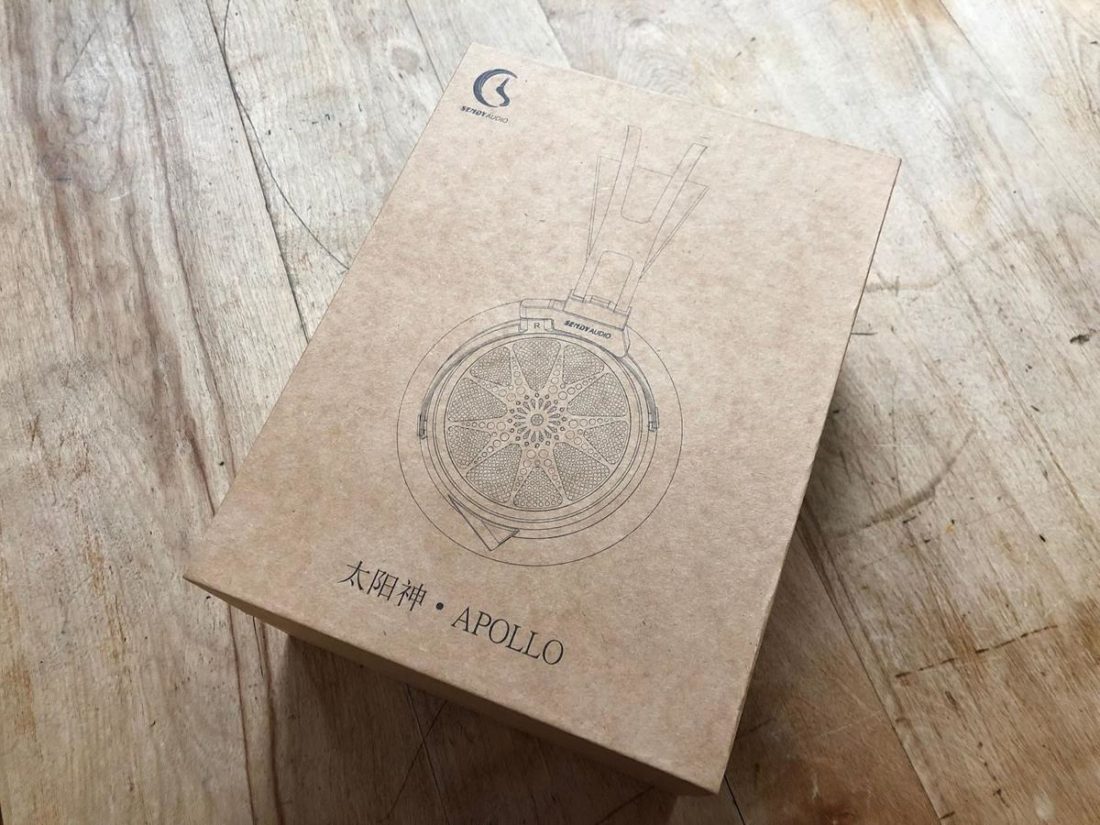
Packaging
Sendy Audio does an excellent job with its packaging. Back again is the familiar environmentally-friendly brown cardboard box from the Aiva, with a simple line drawing of the headphones adorning the front. Inside is Sendy Audio’s distinctive molded vertical hard-case containing the headphones, hemp bag, and cable.
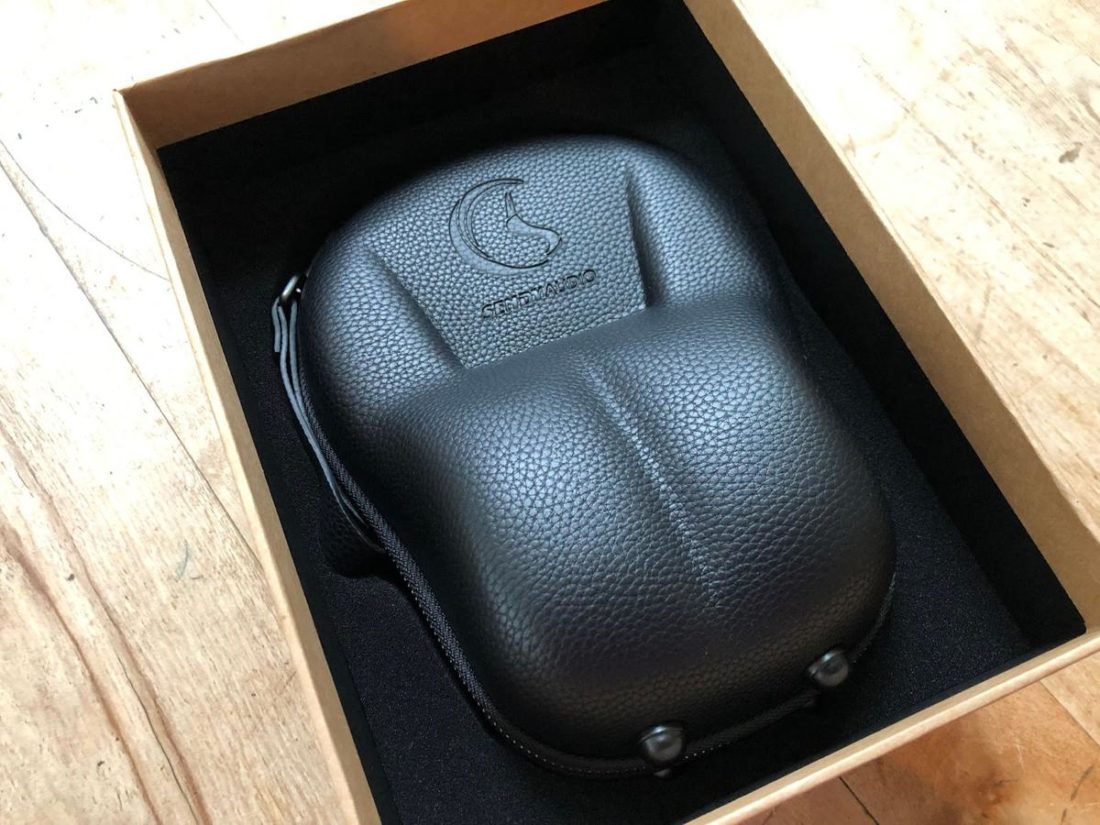
In the box
- Apollo headphones
- Storage case
- Hemp bag
- 4.4mm-to-2x 2.5mm balanced cable (160cm)
- 4.4mm-to-3.5mm adapter cable (20.5cm)
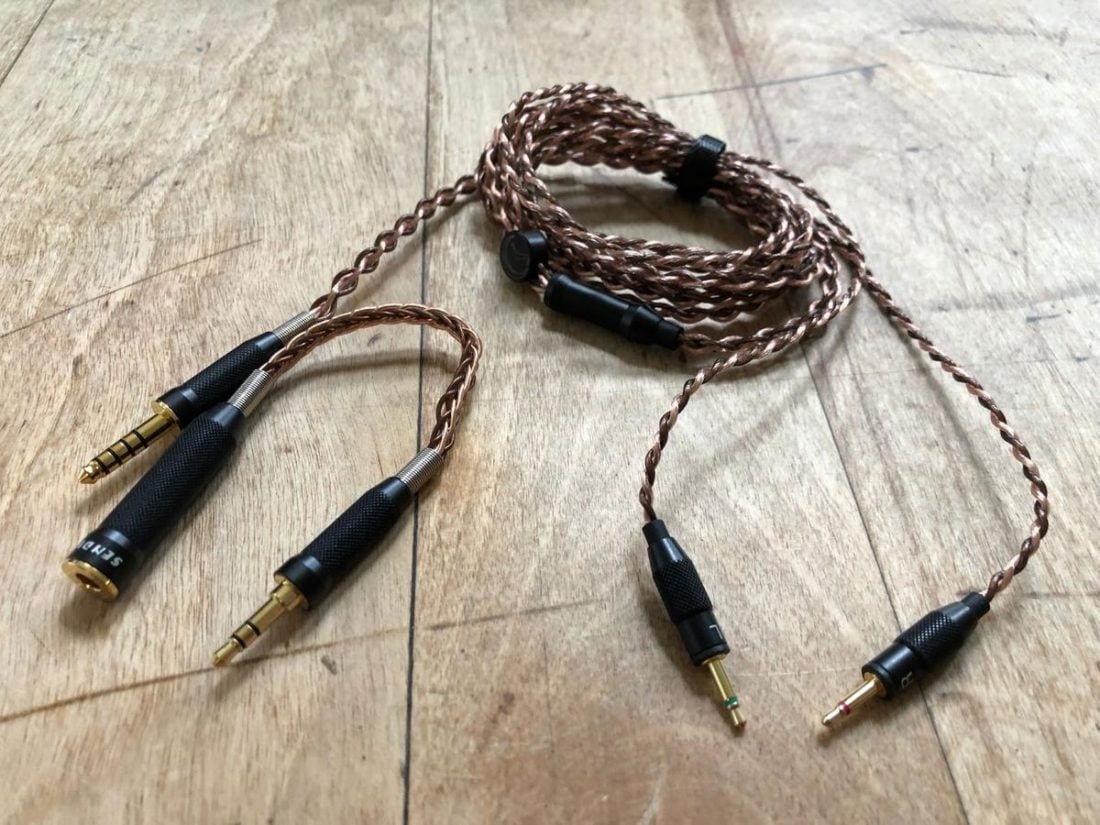
Cable
The Aiva have perhaps my favorite cable included with any pair of headphones. The 6N OCC copper Apollo cable is very similar in design, although this time the 4-wire braid is a combination of darker bronze and lighter copper wires, and the y-split and connectors are a more subdued black metal color, rather than the stylized silver fish-scale of the Aiva.
The headphone cup jacks are securely snapping 2.5mm mono plugs and are differentiated by L and R labeling and color-coded bands. The 4.4mm-to-3.5mm adapter cable is made to the same standards as the headphone cable.
This is a premium-looking and feeling cable that doesn’t tangle easily or suffer from undue microphonics.
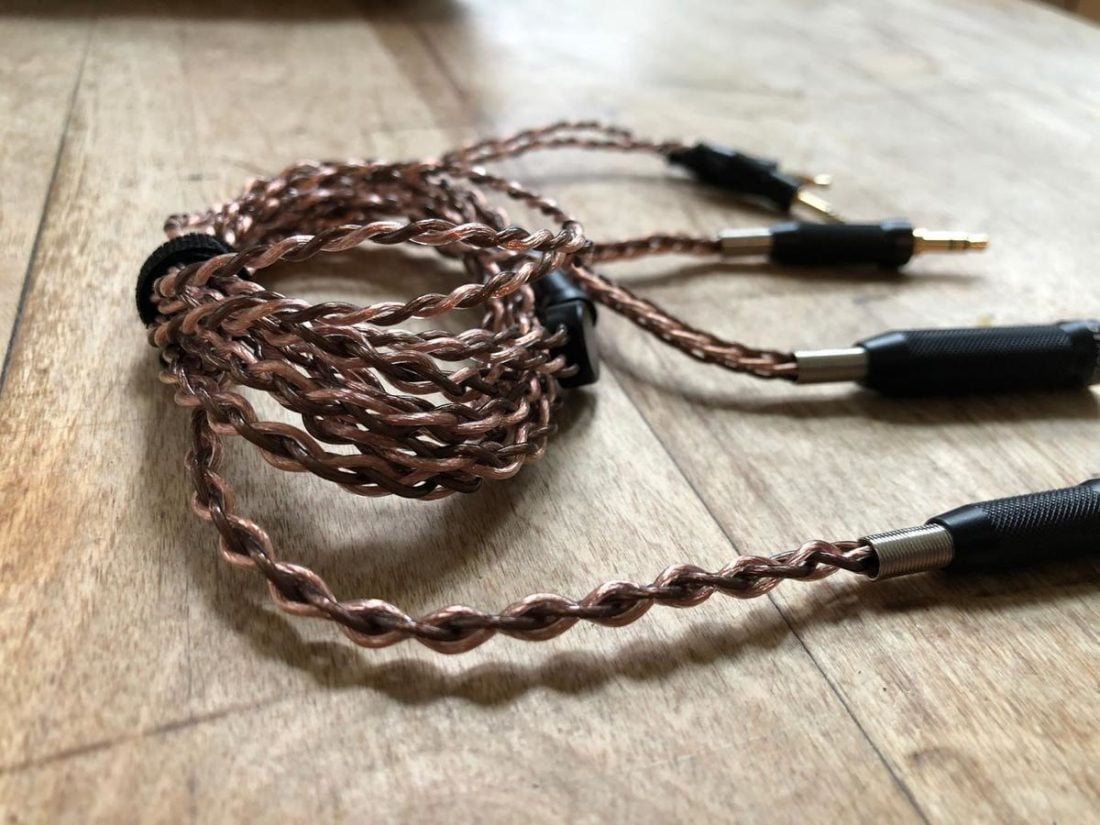
It’s all I’m looking for in a cable.
Design
I gushed about the Aiva’s suspension-style headband in my initial review, and now that I’ve lived with it for a while, I’m just as enthusiastic to see it used again on the Apollo. It’s light, comfortable, and adjustable. It fits reasonably snugly to the head and looks great. And this time the comfort strap is slightly padded rather than just being a flat leather band.
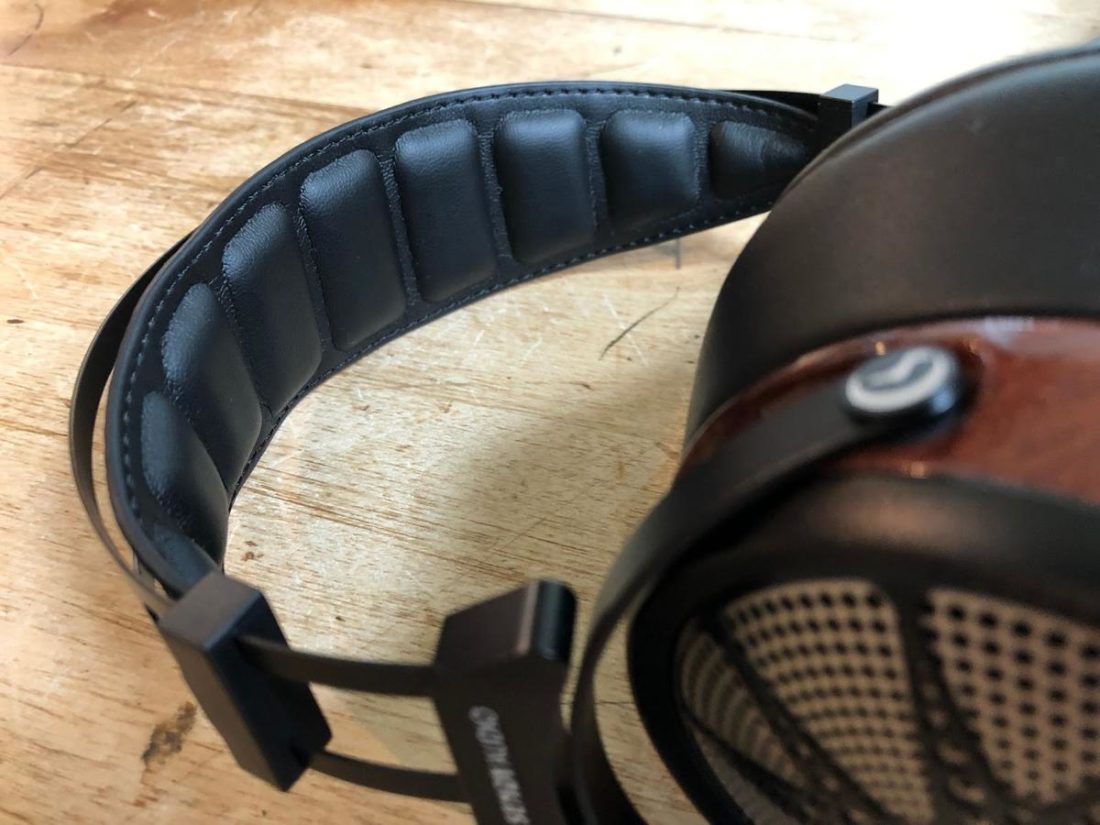
Sendy Audio nailed the design.
Beyond the great headband and cable, the lovely wooden cups do not disappoint.
The CNC carved, glossy wooden cups are flawlessly constructed and almost glow with dark chocolate color. While I appreciate the fish scale pattern of the Aiva grills more, the black over steel mesh sunlight design on the Apollo is undeniably attractive, and in line with the ‘god of sun and light’ theme.
Comfort
The comfort strap in the headband is reportedly made of goatskin over foam, while the earpads are constructed of “high protein materials and memory foam.” These may be the softest, plush, and pillow-like ear pads I’ve ever donned. The head-side contact surface is slightly narrowed on top and bottom from the generous 20mm width on the sides.
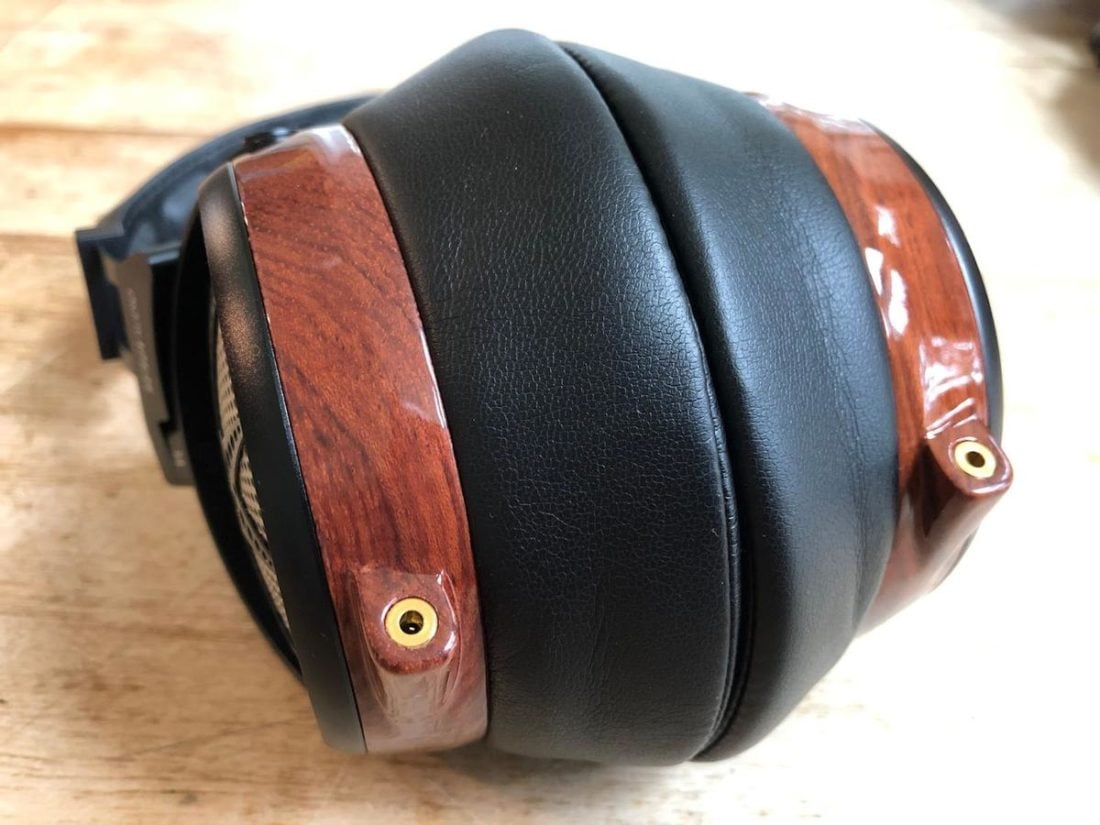
The Apollo pads are crazy comfortable.
The pads are clearly labeled L and R, and due to their faux-leather construction, are not breathable and do get somewhat warm. I also question why the seam is on the top, rather than being less visible if it was placed at the bottom. Although the soft pads conform well to seal against the sides of my head, isolation is virtually nil due to the very open-backed nature of the cup design.
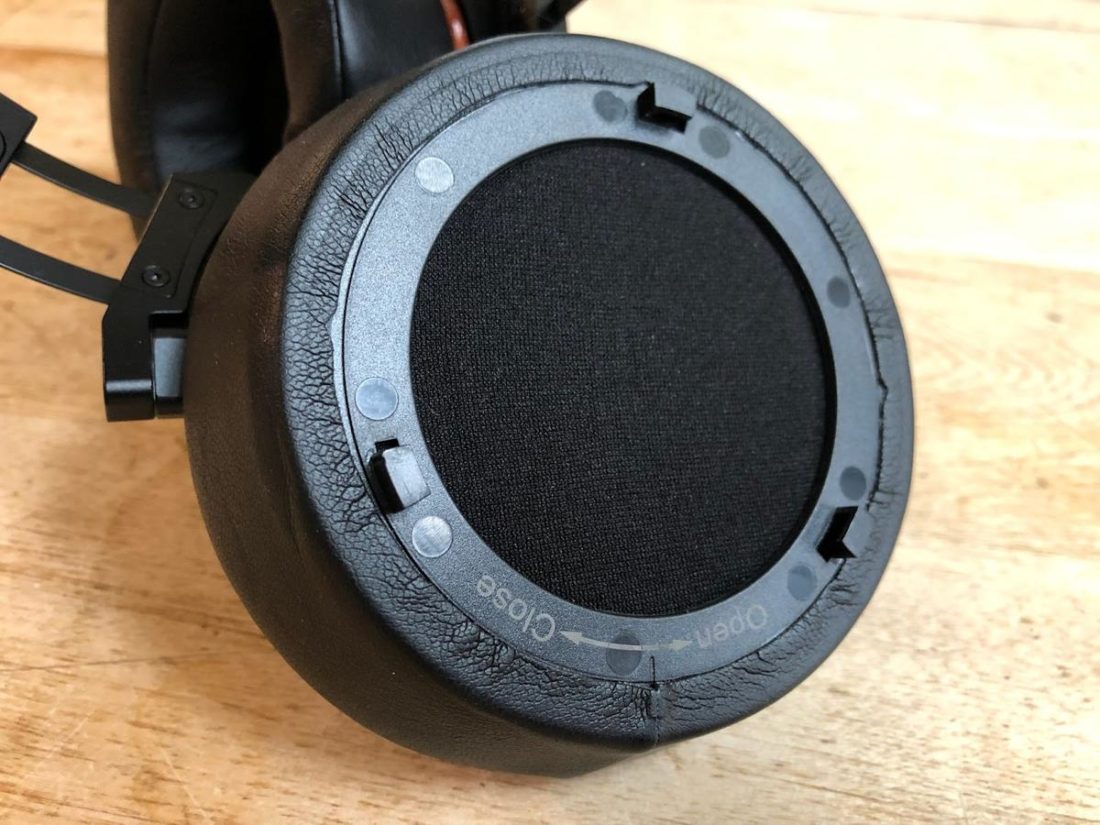
The Apollo weigh slightly under 400g, which is impressive for a pair of wooden cupped, dual-sided magnet planar headphones. As a point of comparison, the Audeze LCD-2 weigh almost 50% more. This has a noticeable impact on comfort for long-term listening sessions.
Internals
“QUAD-FORMER Technology: the planar magnetic driver is made of double magnets + double sides of coils on diaphragm + double coils on each sides of diaphragm. The coils are arranged with good balance… there are 4 coils on the diaphragm…
It has excellent electroacoustic energy efficiency conversion, extremely low distortion, very good consistency and high ability for music reproduction.” – Sendy Audio
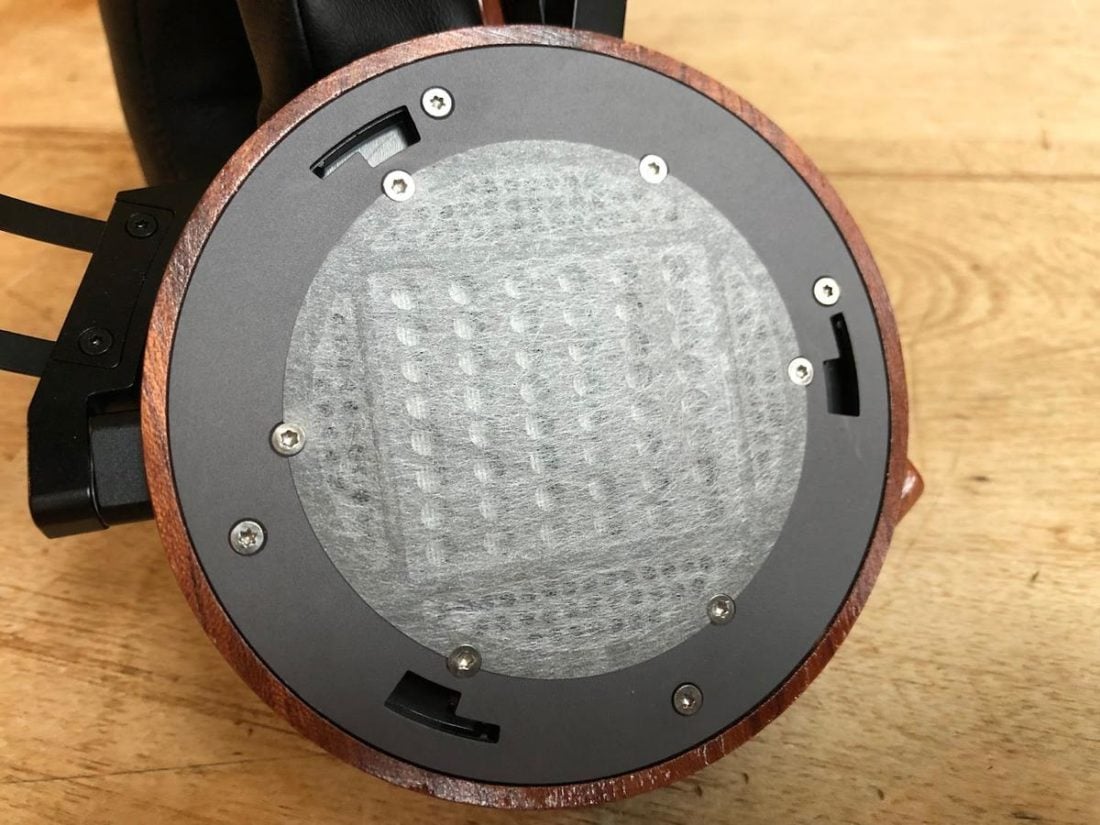
Reportedly the driver design is a culmination of three years of work to optimize the magnetic circuit and resonance to provide “natural and soft vocal, as well as solid bass… making treble bright with clear details and ensuring the listening relaxed and comfortable [sic].” The Peacock were the debut of the QUAD-FORMER design, and it’s great to see it appearing on lower-priced models.
The steel grills and wooden enclosure are intended to minimize resonance and unwanted internal reflections. The 68mm planar magnetic driver is rated at an impedance of 16 Ohms and an efficiency of 95 dB. Unlike the Aiva, which sonically benefits greatly from robust amplification, the Apollo are much friendlier to portable devices.
Sendy Audio Apollo Sound
The Apollo is characterized by a rich and warmly colored sound. They sound thick, but without seeming too slow or muddy. They are VERY different sounding from the much leaner and higher-frequency focused Aiva. Overall, they have a strong v-shaped tuning, where the lower bass frequencies extend up into the midrange, creating an intimate presentation.
The tuning imbues a distinct character to voices and instruments. Objective audio purists wanting their music only “the way the artist intended” will likely need to look elsewhere, but subjectively the Apollo have an inviting and pleasing signature.
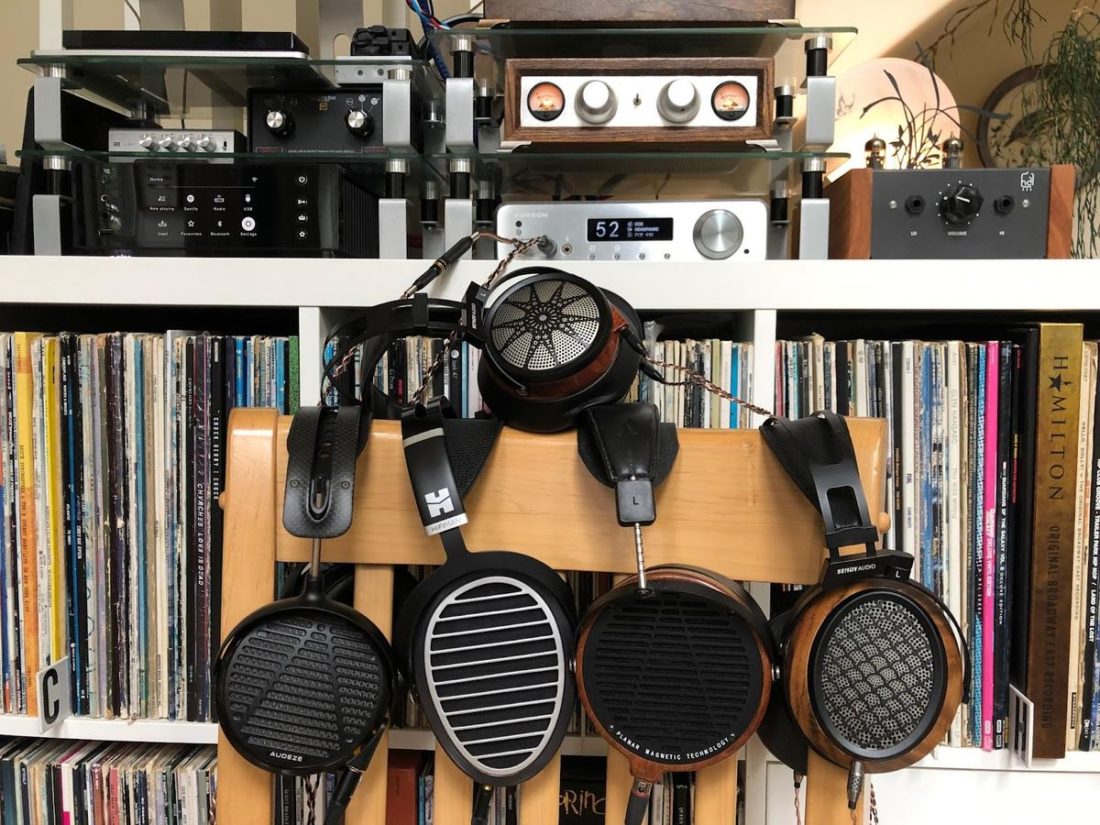
With the Aiva, the sound sits further back from the listener, is far less narrow and has significantly less bass impact. The Aiva sound thinner and brighter than the Apollo. The Apollo are more forward with a low-end punch closer to the HIFIMAN Ananda.
However, that’s where the similarities end between these two planar magnetic headphones, as the Ananda sound sharper, clearer, and ultimately more fatiguing. Besides, they are nowhere near as comfortable to wear as the Apollo, as their longer oblong shape digs into my jaw.
The Audeze offerings also sound significantly different from the Apollo (and each other). The LCD-2 are far less efficient, with leaner bass and less impact. Midrange clarity is noticeably improved. The TOTL LCD-5 take all of that to a different level. Fast, tight, crisp, and resolving.
The Apollo may be the most unique sounding of them all, and I don’t mean that in a bad way.
They’ve got their own strong character, which some will love and others not so much. For open-backed headphones, they are surprisingly intimate, placing the listener in the midst of the band.
The low-end drive is fun for pop and electronic music, and although the midrange is colored, it all remains fast and in control enough not to become congested. While the mids take a back seat, there is enough high-end energy to keep things sounding clear and fairly resolving.
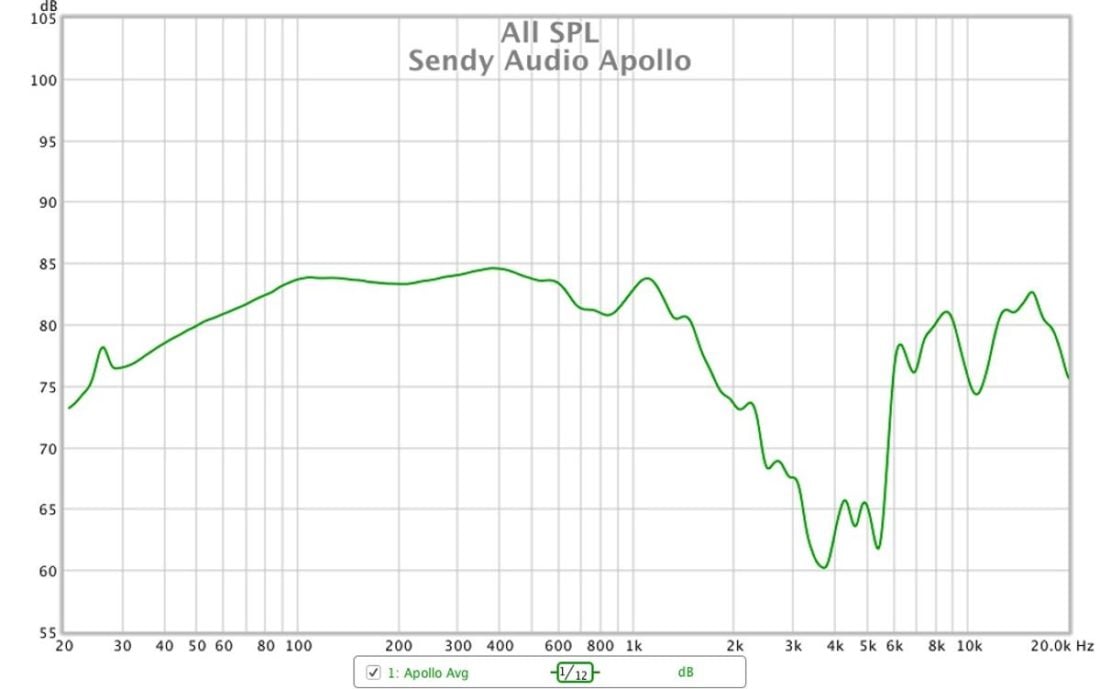
Bass
The Apollo are unapologetically bassy headphones. They have a very full sound due to their elevated bass levels which smoothly descend into the sub-bass regions. There isn’t a real mid-bass bump, nor is there a dip before frequencies move upwards into the midrange. This solid low-end foundation serves as the primary influence on the Apollo’s overall warm sound signature.
While the quantity feels a touch thick, things sound reasonably accurate and real. Speed is sufficient to present notes and hits cleanly, without murk or blur. However, it is a rich and full presentation, more so than agile or punchy. The bass authority creates the foundation and anchors the Apollo’s presentation.
Midrange
The Apollo have a strongly recessed midrange presence, especially in the higher midrange. The mids are defined by the low-end spilling upwards, warming and adding body to instruments and vocals. If you are looking for crisp, balanced, and accurate midrange performance, the Apollo are best skipped. However, the coloration is sonically pleasing to the ear, and the Apollo boldly do their own thing.
Sometimes it’s ok to do things differently and offer a truly alternative sound.
The midrange does sound somewhat small, and the narrow soundstage can lead to details being lost in complex musical passages. As the frequencies move upwards into the treble regions, presence increases again, and this gives the impression of decent transparency and resolution. The Apollo avoid sounding veiled, even though warmth is the name of their game.
Treble
Treble is the saving grace for the Apollo. Rather than sounding murky or overly dark, the Apollo are able to be lush and full, but with enough high-end presence to maintain detail. It’s not quite enough to inject the Apollo with a generous sense of space, but there is sufficient energy and clarity for music to sound natural and not congested.
The Apollo experience is more of a small plush jazz club than a stadium rock show.
With such a prominent low-end, Sendy Audio is able to create clarity with a delicate high-end. The Apollo give a comfortable, engaging, and intimate listening experience.
Where to Buy
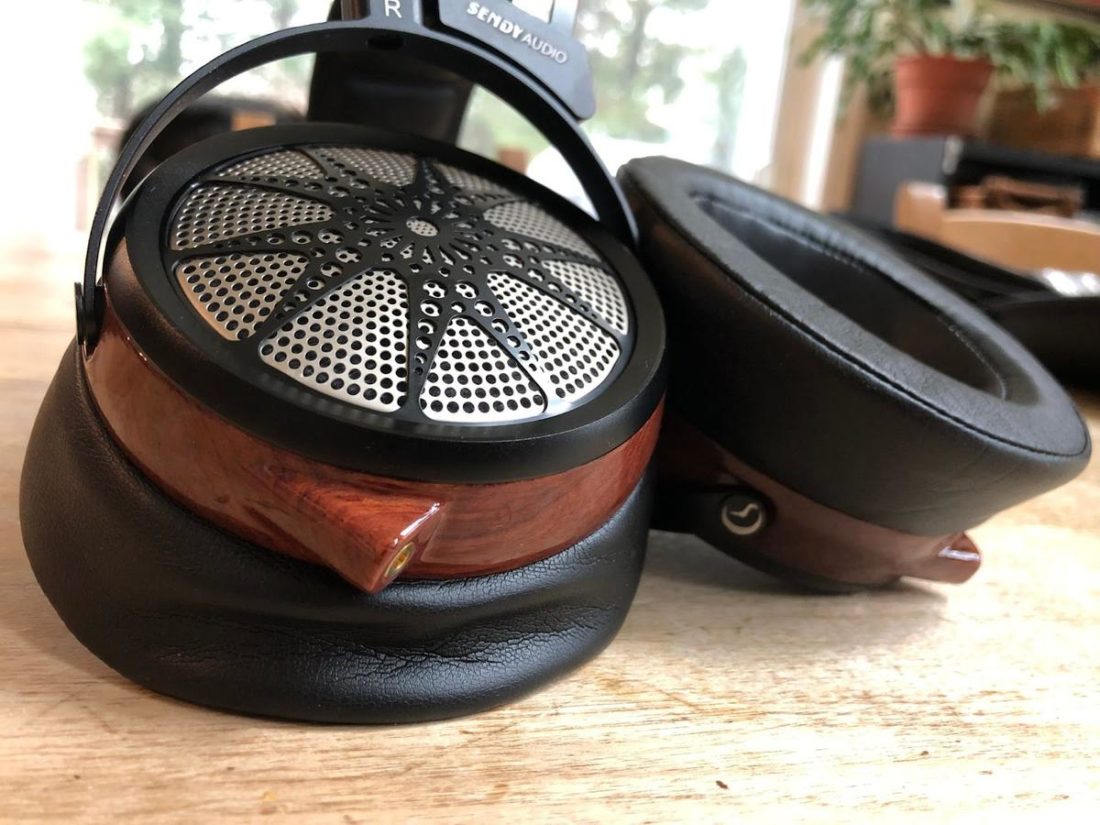
Conclusion
The Dude would approve of the Apollo. His personal mantra is to go with the flow and derive pleasure by living in the moment. The Dude’s hedonistic tendencies would fully enjoy this listening experience. But, of course, we’re not all The Dude.
You have to ask yourself what you enjoy when you listen to headphones. Do you derive pleasure from extreme accuracy or a warm sonic soundscape? Do boosted low frequencies and a colored sound appeal? Or is it all about perceived sonic perfection and the pursuit of exactitude?
The Apollo provide subjective, rather than objective, gratification.
Lovers of an intimate, v-shaped sound need to check out the Apollo. Terrific looks, flawless construction, and sublime comfort make the Apollo a winner. These aren’t cans content with being indistinguishable from other mid-range planar headphones, either physically or sonically.
The Apollo carve out their own niche in the mid-range planar magnetic headphone market and will likely polarize listeners, depending on their personal sound preferences. As the market tends to move towards ‘safe’ tuning graphs, such as the Harman Curve, I find myself appreciating the outliers more and more.

Nice review. You have piqued my interest. I am looking at a used pair and I wondered if they would be worth the effort. I already have too many headphones, but I am always looking for something that has a unique sound.
They definitely offer something different! 🙂
One of the worst frequency curves ever! Why can’t companies make a headphone with a linear curve? Are you ppl really so lazy or stupid, you don’t have the energy or ability to form your own sound?? Let me tell you lazy ppl something, the reason for a linear curve, is to represent the music as true to the original as possible!!